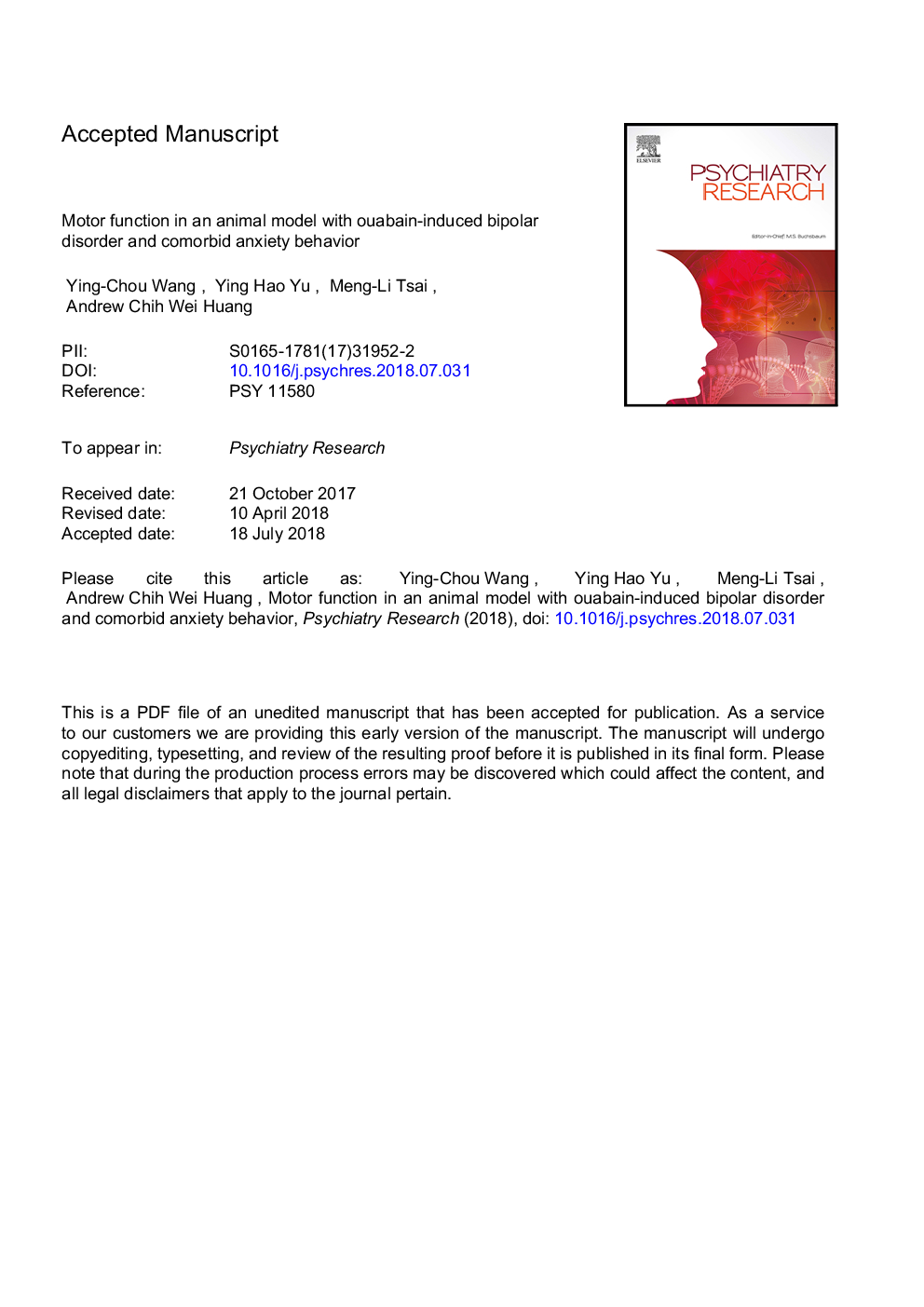| Article ID | Journal | Published Year | Pages | File Type |
|---|---|---|---|---|
| 11002038 | Psychiatry Research | 2018 | 37 Pages |
Abstract
In a clinical setting, anxiety disorder is highly correlated with bipolar I disorder in humans. However, the comorbidity of anxiety behavior and bipolar disorder still remains unclear in an animal model. This study utilized an ouabain-induced animal mode to examine anxiety and mania in an open field test. In the present study, 5 µl of artificial cerebrospinal fluid (aCSF) or ouabain (10â5, 10â4, and 10â3â¯M) were administered into the left ventricle. The animals' motor functions and anxiety behaviors were measured for 15â¯min. The results showed that 10â3â¯M ouabain significantly increased the animal's total distance traveled, average speed, and maximum speed compared to the control group. The time spent inside (i.e., how much time rats spent in the center of the square) and the inside-outside times of the central square (i.e., how many times rats ran across the center square) of the higher-concentration groups (10â4â¯M and 10â3â¯M) were significantly decreased. Therefore, a high concentration of ouabain may induce hyperactivity. The 10â4â¯M and 10â3â¯M ouabain groups exhibited more anxiety behaviors. The study is the first model to examine comorbid anxiety behaviors and bipolar disorder in an animal model. The study provides some insights for comorbid anxiety and bipolar disorder in clinics.
Related Topics
Life Sciences
Neuroscience
Biological Psychiatry
Authors
Ying-Chou Wang, Ying Hao Yu, Meng-Li Tsai, Andrew Chih Wei Huang,
